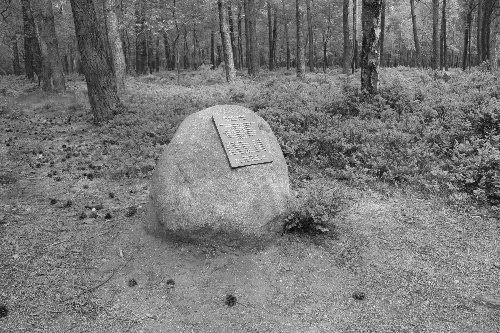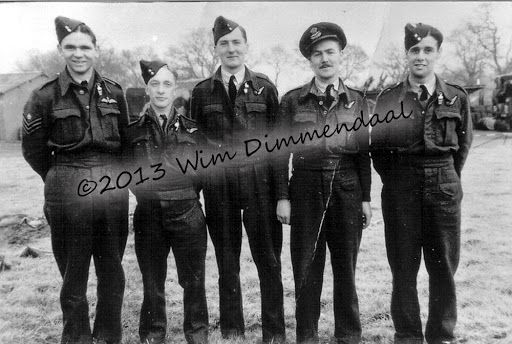The eight-man plane was hit by German anti-aircraft fire and, with a burning engine, it crashed at Planken Wambuis. Tail gunner Wood and dispatcher Badham were the only survivors.
A group of paras of the 10th Parachute Battalion, who had been dropped at the wrong location and were hiding because they couldn’t reach their own unit, saw the crash. They took Wood and Badham along to their hiding place in the wood. At a farm at Nieuw-Reemst the two airmen were given water and bread, and the next day they were taken to see a doctor working at the 133rd Field Hospital. This military doctor had also been dropped with his group at the wrong location on 18 September, and was also in hiding. After an examination, he concluded that Badham had bruised ribs.
The Ede resistance heard that British soldiers were hiding in the woods, and they took most of them to farmer Gijs Jansen’s sheep pen at Zecksteeg. Badham was transported by horse and cart to Ms Dulfer-Ploeg on Grotestraat in Ede, where he went into hiding.
Shortly before the Battle of Arnhem a small team of Belgian secret agents, commanded by Lieutenant Gilbert Sadi-Kirschen, had been dropped in the Zuid-Veluwe area. Wood helped secret agent Kirschen to code and decode messages. Then, Kirschen asked him to transport special film material across the River Rhine and River Waal to Nijmegen. It was a risky undertaking, but by taking a secret route Wood managed to reach Nijmegen. On 7 October, he flew back to England and was received with great relief and joy, because he had already been listed as missing.
On 22 October 1944, the Dutch resistance undertook a daring operation in collaboration with the Allies to the south of the Rhine. 138 Allied soldiers and airmen who were in hiding in Ede and the surrounding area were guided right through the German lines to the liberated area to the south of the Rhine. This escape operation was dubbed Pegasus 1. Badham was one of the men who was able to escape from occupied territory in this way.
A small monument in the wood by Oud-Reemster Heath commemorates the victims of this British Stirling bomber LJ883, which crashed on 23 September 1944.
Do you want to experience this story in its original location? Then visit the information panel at the crossroads of the Plankenwambuisweg paths.

